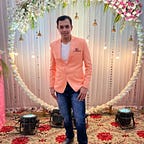Noise and Error in Quantum Computing.
An Introduction to the limits in Quantum Computing
‘External and Internal disturbances break too many things in life. The only thing we could do is to learn from those incidents. In technology, we have to minimize those disturbances and in life, we have to forgive those disturbances and sometimes apologise for whom we became a disturbance.’
What is Noise?
The environment around a quantum bit(qubit) is noisy as there can be some presence of heat, magnetic and electric fields, radiations etc. This noise affects the qubit state and causes errors in quantum computers. Thus noise and errors are barriers to making an ideal quantum computer. Each qubit is associated with some noise and as the number of qubits increases the noise gets compounded.
The equation is:
(Ideal Quantum Computer) = (Practical Quantum Computer) — (Noise and Errors)
Noise can be found in different stages such as States, Gates and Measurements.
- Noise in States:
Qubits before and after an operation must be in a particular state according to our needs. However, qubits naturally don’t want to be in that state. This results in 2 types of noise.
1) Relaxation Noise (T1): Qubits always want to be in their lowest state i.e. |0⟩ state. Noise from the environment causes qubit to collapse from |1⟩ to |0⟩ state. This relaxation happens over a time T1 and it is an important number that researchers need to increase and is a parameter to compare different qubit modalities.
2) Decoherence Noise (T2): It is the loss of quantum information stored in a qubit state. Suppose the qubit is in superposition state |+⟩ i.e. (|0⟩+|1⟩)/√2 (Note: Superposition is a purely quantum phenomenon.).The qubit collapses from the |+⟩ state to the |0⟩ state. This is also known as loss of coherence. Qubit decoherence happens over a typical time T2.
- Noise in Gates:
In superconducting qubits, gates are the microwave energy pulses. Hence, to apply a particular transformation to a gate, we must give appropriate energy to that qubit to transfer it from its initial state to its final state. It’s like golf (Too much energy will move the golf ball away from the hole and too little energy won’t cover the distance to reach the hole). This can cause gate errors i.e. the final qubit state is not the desired state.
Gate Fidelity: Gate errors are measured through gate fidelity. Fidelity is a measure of how reliable the gate is. If we apply a gate n times then how many times would it produce the right final state?
Each gate is associated with an error, and in a circuit, we have too many gates. So errors of all gates propagate and gate errors get compounded.
- Noise in Measurement:
To measure qubits, we have to expose them to the environment. But this leaves them vulnerable to errors, known as measurement or readout errors. Measuring qubits is a very tricky act and is at the heart of quantum engineering. Since on one side, we want to isolate our qubits so that they are not affected by noise. However we can’t isolate them so much that they can’t be measured when we want to. A common way to quantify readout errors or measurement errors is how often they occur. For instance measurement error of 0.05 means 5 incorrect readout errors in 100 runs.
There are 2 ways to handle errors.
- Error Mitigation: Reduce errors by reducing noise from the environment. This is known as Quantum Error Mitigation.
- Error Correction: Correct errors by changing how information is encoded in qubits. This is known as Quantum Error Correction.
For now, we will talk only about Quantum Error Correction.
Quantum Error Correction(QEC):
It is a general set of techniques for making computation work correctly even if there are errors. It is a crucial part of classical and quantum computing. It’s about protecting quantum computers from errors, relying on quantum properties since classical approaches don’t tend to work. QEC is vital in creating fault-tolerant quantum computers.
In classical computers, we can simply measure the bits at each step to check for errors and correct them as needed. However, this technique cannot be used in quantum computation as quantum measurement collapses the whole computation. Hence, we need some way to encode information in a way that corrects errors in between as they happen. These encodings are called Quantum Error Correcting codes e.g. Shor Code, Bosonic code, Surface code etc.
Facts:
- No quantum computer will ever be noise-free. There will be some level of error and our goal is to reduce that error.
- Our goal is to design fault-tolerant quantum computers
- Quantum Threshold Theorem: There exist certain error rates below which we can achieve truly fault-tolerant quantum computers. With enough error correction we can achieve this rate but identifying the exact amount of error correction is an area of research.
Hence handling errors and noise is a crucial step in building a fault-tolerant and near-ideal quantum computer.
Originally published at https://aanshsavla.hashnode.dev.
